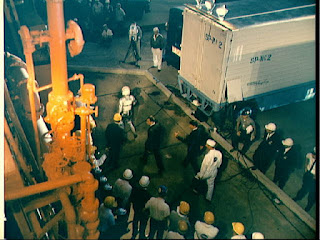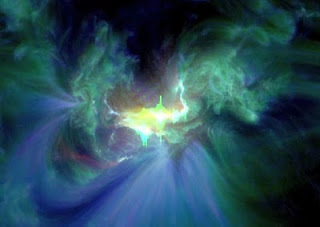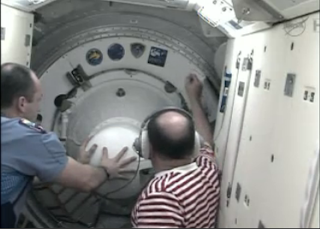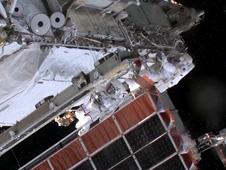Gordon Cooper official White Space Suit picture.
Fifty Years ago, the last of the Mercury Atlas missions stood on the launch pad at LC-14 at Cape Canaveral. So far, all of the Soviet Vostok missions had lasted for a day or more, so this flight was expected to help the USA catch up to the Russian space milestones. Mission MA-9 had been carefully prepared, and during the day before (May 14, 1963) the mission had to be scrubbed due to radar problems at the Bermuda tracking station and a diesel engine problem with the gantry on the pad. The flight would be attempted on May 15.
Astronaut Cooper walks out to the Van for the trip to the pad.

Cooper leaves the van at the base of the Gantry.
At the top of the tower. Faith 7 Mercury Capsule is prepped by technicians while Cooper inspects the outside of the craft.
Helped by the technicians, Cooper is carefully inserted into the capsule and the cramped cockpit.
May 14. Launch Scrubbed. Gantry will not retract. Flight rescheduled for the next day.

May 15. Gantry retracts. Countdown continues.

Mercury -Atlas 9, lifts off at 8:04 am EST. Rocket is Atlas booster 130-D and capsule is spacecraft #20.
View of EArth from Orbit.
Cooper enjoyed a successful launch, and was given a go for the first 7 orbits. Eventually he would make 22 orbits. The mission time was 34 hours and almost 20 minutes. During that time, Gordon worked on 11 experiments and took lots of pictures when he could not get to sleep.
View of the Himalayas.
Slow-Scan TV image of astronaut in capsule. A first for NASA.
In the 19th orbit, things started to go wrong. He began to get false indicators lights on the control panel incorrectly indicating he was re-entering orbit, Then the Auto-pilot system failed. Cooper went to manual during the next orbits and re-entry. Carbon dioxide level was increasing. Even under the pressure of a malfunctioning capsule, Cooper kept his cool and expertly guided Faith 7 into re-entry and splashdown.
US Carrier USS Kearsarge and destroyer.
There were more than 20 ships stationed around the world in case of an emergency re-entry and splashdown. However, Cooper made a near-perfect landing, the most accurate to date.

Faith 7 under parachute descends to the Pacific ocean near Midway Island, Hawaii.

Splashdown!
Navy Frogmen secure the flotation collar and prepare for hookup to hoist. Cooper remained inside.
Faith 7 placed on an elevator on board the carrier.
Hatch open view of Cooper in the cramped cockpit.

Cooper is helped onto the deck of the ship. The last Mercury mission is over.
...and the inevitable parade.
NASA officials debated over the need for another mission, which would have been MA-10 and would be a three-day orbital attempt. However, it was decided to end the program and move on to the Gemini program, and prepare the nation for the eventual Moon flights.



















































